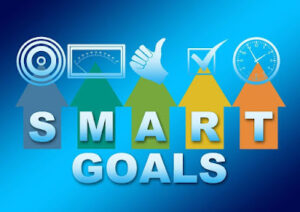Foundational Time Management Principles
Effective time management is crucial for both personal and professional success. To build a solid foundation, prioritization is key. Identify and focus on high-impact tasks using tools like the Eisenhower Matrix to differentiate between urgent and important tasks 📝. Planning is another essential principle; creating daily, weekly, and monthly plans can help organize your tasks effectively. Utilize to-do lists, planners, or digital apps to stay on track 📅. Additionally, time blocking can enhance focus by allocating specific time slots for different activities ⏰. Don’t forget the importance of delegation; assigning tasks to others can free up your time for more critical activities 👥. Setting boundaries and managing distractions are also vital to protect your time and maintain productivity. Lastly, regularly reflect on and adapt your time management practices to ensure they continue to meet your needs 🧐.
The ROI of Time Management 📈
Time management offers substantial benefits, backed by data-driven evidence. For instance, a McKinsey study found that executives who excel at time management are 2.5 times more likely to outperform their peers financially. Companies that implement robust time management strategies report a 20-30% increase in productivity, which directly boosts revenue 💵. On a personal level, professionals with strong time management skills are more likely to be promoted. A CareerBuilder survey revealed that 50% of employers prioritize time management skills when considering candidates for leadership roles 🚀. Furthermore, effective time management improves well-being. A study in the Journal of Occupational Health Psychology found that it reduces stress and enhances overall well-being, leading to higher job satisfaction and better work-life balance 🌟.
Identifying Personal Productivity Blockers 🚧
Scientific studies have identified common productivity blockers that significantly impact performance. Multitasking, for example, has been shown to reduce productivity and cognitive performance. Research from Stanford University indicates that the brain struggles to switch between tasks efficiently 🧠. Digital distractions are another major time waster. According to Rescue Time, people spend an average of 3 hours and 15 minutes a day on their phones, which severely disrupts focus 📱. Procrastination also takes a toll; the American Psychological Association reports that 20% of adults procrastinate chronically, leading to stress and lower quality work. Additionally, a lack of prioritization often results in spending time on less important tasks. The Pareto Principle, or the 80/20 rule, suggests that 80% of results come from 20% of efforts, highlighting the need for effective prioritization 📊.
SMART Goal Setting for Professional Success 🎯
The SMART framework is a powerful tool for setting clear and achievable goals, driving professional success. Goals should be Specific, such as “increase sales by 10% in the next quarter,” rather than vague intentions like “improve sales.” They also need to be Measurable to track progress, like “conduct five client meetings per week.” Achievable goals consider available resources and constraints; for instance, “complete a certification course in six months” is realistic and attainable. Relevance ensures that goals align with broader business objectives. A marketing professional, for example, might set a goal to “increase social media engagement to drive brand awareness.” Lastly, making goals Time-bound creates a sense of urgency, with deadlines such as “launch the new product by December 31st.” Using the SMART framework ensures that goals are well-defined and attainable, facilitating professional growth and career advancement 📅.
Strategic Planning and Prioritization 🗂️
Efficient task planning and prioritization are essential for managing workloads and achieving goals. One effective methodology is the Eisenhower Matrix, which helps categorize tasks based on their urgency and importance. Tasks are divided into four quadrants: urgent and important, important but not urgent, urgent but not important, and neither urgent nor important. This method ensures that high-priority tasks receive the most attention. Another approach is SMART Goal Setting, which involves creating goals that are Specific, Measurable, Achievable, Relevant, and Time-bound. This framework ensures clarity and focus, making it easier to plan and prioritize tasks accordingly. Additionally, Kanban Boards, popularized by the Agile methodology, visually represent tasks and their statuses, helping teams and individuals manage workflows effectively.
Advanced Scheduling Techniques 🗓️
Beyond basic calendars, advanced scheduling techniques like Time Blocking and the Eisenhower Matrix can significantly enhance productivity. Time blocking involves allocating specific time slots for different activities, minimizing multitasking and promoting focused work. For example, you might block out two hours in the morning for deep work, followed by a 30-minute slot for checking emails. The Eisenhower Matrix, as mentioned earlier, is another powerful tool. By organizing tasks into four quadrants, it helps prioritize tasks that need immediate attention and those that can be scheduled for later. Real-world examples include executives using time blocking to manage their packed schedules or project managers employing the Eisenhower Matrix to prioritize project tasks effectively.
Optimizing To-Do Lists for Peak Performance 📋
Research-backed strategies for optimizing to-do lists emphasize simplicity and clarity. One effective approach is the Ivy Lee Method, where you write down the six most important tasks for the next day, prioritizing them by importance. Another strategy is the 1-3-5 Rule, where you aim to complete one big task, three medium tasks, and five small tasks each day. Integrating to-do lists with productivity apps can further enhance efficiency. Apps like Todoist, Microsoft To Do, and Trello offer features like task categorization, deadlines, and reminders, which help streamline task management and foster productivity.
Productivity-Enhancing Techniques 🚀
Maximizing individual productivity involves practical tools and strategies. Techniques like the Pomodoro Technique, which involves working in 25-minute intervals followed by a short break, can enhance focus and prevent burnout. Using apps like Focus Booster or Pomodone can help implement this technique effectively. Another strategy is the use of productivity tools like Evernote for note-taking and organization, or Notion for project management and collaboration. These tools help streamline tasks and keep all relevant information easily accessible 📝.
Crafting a Focused Work Environment for Optimal Performance 🧘♂️
Creating a work environment conducive to deep work involves minimizing distractions and fostering concentration. Evidence-based tips include setting up a designated workspace, using noise-canceling headphones, and maintaining a clutter-free desk. Additionally, incorporating elements like natural light and ergonomic furniture can enhance comfort and focus. Implementing digital tools such as website blockers (e.g., Freedom or Stay Focusd) can help limit online distractions, ensuring more focused work sessions 🌞.
The Science-Backed Pomodoro Technique for Enhanced Focus ⏲️
The Pomodoro Technique is a time management method that improves focus and productivity. By working in 25-minute intervals (Pomodoros) followed by short breaks, you can maintain high levels of concentration and prevent mental fatigue. This technique is backed by research indicating that frequent breaks improve cognitive function and reduce stress. Tools like TomatoTimer or Pomodone can assist in adopting this method, providing timers and tracking to ensure adherence to the intervals 🔔.
Nutritional Strategies for Sustained Energy 🍎
Nutrition plays a significant role in cognitive performance and sustained energy levels. Consuming balanced meals with a mix of complex carbohydrates, protein, and healthy fats helps maintain stable blood sugar levels, preventing energy dips. Foods rich in omega-3 fatty acids, like salmon and walnuts, support brain health, while antioxidants found in berries can enhance cognitive function. Staying hydrated and avoiding excessive caffeine and sugar intake are also crucial for maintaining consistent energy and focus throughout the day. Incorporating these dietary strategies can significantly boost productivity and mental clarity 🥗.
By integrating these methodologies and strategies, individuals can enhance their time management, productivity, and overall well-being, leading to more efficient and effective performance both professionally and personally.
Achieving Work-Life Balance for Overall Well-being 🌟
Maintaining a work-life balance is crucial for long-term success and overall well-being. By effectively managing both professional responsibilities and personal life, you can sustain productivity, reduce stress, and improve your quality of life. Achieving this balance requires a strategic approach to time management, ensuring that all aspects of your life receive the attention they need.
Time Management Across Life Roles 🕰️
Balancing multiple roles—such as professional duties, family responsibilities, and personal care—demands effective time management. One practical technique is to set clear boundaries between work and personal time. Define specific work hours and personal time, and communicate these boundaries to colleagues and family members to ensure respect for your schedule. Using a unified calendar that integrates both professional and personal commitments can help avoid scheduling conflicts and ensure all responsibilities are accounted for. Prioritizing tasks across roles using frameworks like the Eisenhower Matrix allows you to manage time effectively and focus on what truly matters. Additionally, time blocking—allocating dedicated time blocks for different roles—ensures that each aspect of your life gets the necessary attention. For instance, set aside mornings for professional tasks, afternoons for family time, and evenings for self-care or hobbies.
Prioritizing Breaks and Fostering Self-Care 🌼
Scheduled breaks and self-care practices are essential for preventing burnout and maintaining optimal performance. Implementing techniques like the Pomodoro Technique, which involves taking short breaks every 25 minutes, can refresh your mind and improve focus. Incorporating self-care activities into your routine, such as exercise, meditation, or hobbies, promotes relaxation and well-being. A digital detox—allocating time away from screens—reduces digital fatigue, while engaging in activities like reading, walking, or spending time outdoors can help you recharge. Mindfulness and relaxation techniques, such as deep breathing exercises, can manage stress and maintain mental clarity.
Developing a Sustainable Time Management Routine 🛠️
Creating a personalized time management system that fits your lifestyle is key to long-term success. Start by assessing and reflecting on your current time management practices. Identify what works well and what needs improvement. Set realistic goals that align with your professional and personal aspirations using the SMART framework to define specific, measurable, achievable, relevant, and time-bound goals. Develop a daily and weekly schedule that incorporates all essential activities, including work, family time, and self-care. Regularly review and adjust your routine based on feedback and changing circumstances, as flexibility is crucial to accommodate unexpected changes and maintain balance. Leveraging technology—using apps and tools like Todoist for task management, Google Calendar for scheduling, and Notion for organizing projects and notes—can further enhance your time management routine.
By integrating these techniques and resources, we can create a balanced and sustainable approach to managing their professional and personal lives, leading to greater well-being and long-term success.
Thank you for your time and consideration ❤️ 😊
@Puja Singh🤓🌿…










